
Guests
- Ahmed Al-Farrahead of pediatrics at Nasser Hospital in the Gaza Strip.
We speak with the head of pediatrics at Gaza’s Nasser Hospital, where Israel killed more than 20 people, including five journalists, Monday in a “double-tap” strike, drawing global condemnation. Dr. Ahmed Al-Farra says Israel’s justification of targeting a camera on the roof is “unbelievable,” and calls the attack “a calculated trap aimed at targeting rescue teams.”
Transcript
AMY GOODMAN: We begin today’s show in Gaza, where health officials are reporting an additional 10 deaths due to starvation in the past day, including two children. This brings the total number of starvation-related deaths in Gaza due to Israel’s indiscriminate blockade to 313, nearly 120 of whom are children.
Israeli attacks continue across the besieged strip as Israel’s military forces intensify an offensive in Gaza City, where Israeli tanks and warplanes have leveled entire blocks, destroying family homes. Gaza officials say Israeli strikes have killed at least 75 people in the past 24 hours, including 18 Palestinians killed seeking food. Meanwhile, more Palestinian families have been forced to flee Gaza City due to the relentless Israeli shelling.
HIND MOHAMMED ABU WARDA: [translated] Where is the south? Even if we die, we won’t go to the south of Gaza. The south is worse than here. There is no safety here or there. It is all the same.
AMY GOODMAN: This all comes as Human Rights Watch says U.S. military personnel and contractors can be held liable for Israeli war crimes committed in Gaza for, quote, “providing intelligence for Israel strikes and conducting extensive coordination and planning,” unquote.
Today, Trump is set to chair a White House meeting on a comprehensive plan for managing postwar Gaza.
For more, we go to Gaza, where we’re joined by Dr. Ahmed Al-Farra. He’s the head of pediatrics at Nasser Hospital in Khan Younis.
First of all, our condolences on this latest attack on Nasser Hospital. The world has recoiled in outrage this weekend with the killing of five journalists, as well as healthcare workers and Civil Defense workers who ran to the aid of the Reuters journalist, who had been putting up a live stream. Can you explain what you understood happened and the Israeli response, calling it a “tragic mishap,” this double-tap strike?
DR. AHMED AL-FARRA: OK. Thank you for having me, my friend and my colleagues.
First, two days ago, nearly at 10:20 in the morning, while I was in my office while examining a case, whose was — some my colleagues sent it for me for consultation, and I put the stethoscope in my ears. Suddenly we heard a very loud voice. It’s like something extreme voice and a very loud voice, which is move the building that we are standing or sitting in it. We were completely confused. Even the mother, that I was examining her child, has syncopal attack and fainting, and we were confused, to treat the mother or to continue examining the patient or to go downstairs and to see what’s happening.
Later on, we discovered that there were a bomb tank was directed to the external stairs of Al-Yassin building. You know, Al-Yassin building, it is the main building of Nasser Medical Complex. It is belongs to the operation theater it belongs to. It contains also the ICUs. It contains also the lab and the reception room. All the main departments in Nasser Medical Complex are in Al-Yassin building. This stair is out stairs. It’s like emergency stairs. The top of that stairs is — they have some area in the fourth floor. This area is the most powerful for a eSIM card. You know, the journalists are using eSIM cards for covering their events, for documenting their events, and send that for their agencies.
The first journalist, whose name is Hussam, was there, and he was covering and documented his material and sent by the eSIM card to that area, but he was targeted. Later on, the occupational forces says that they are targeting something like a camera. OK, OK, I understand that you want to damage the camera. Why you are killing the people? You are — you are highly technique. You have high technique. You have a drone. You have snipers. You have everything. You can shoot the camera, OK. You can evacuate. You can tell the administration of Nasser Medical Complex, “Evacuate that camera with the journalist from that area.”
What I mean, that the first attack was double attack. The first attack is for the external stairs of Al-Yassin building. And in the same time, there were another attack for the balcony of Al-Yassin building in the fourth floor. In that balcony, there were doctors. There are medical students in the sixth year of faculty of Al-Azhar University, which is local university, and they are studying medicine. And they were discussing the cases of intensive care unit with their colleagues. So, Al-Azhar was executed, unfortunately, and Hussam, the journalist, also was executed. And also, his assistant, the photographer, was severely injured.
We, when we hear the voice, all the hospital, all the journalists, all the rescue team, they go upstairs to save their colleagues. You know, we are — as Palestinian, we are something like sympathy with the injured patient. Everyone tried to help. Everyone, they are emotionally, highly emotion to help. OK? So, the rescue team is upstairs. The journalists are upstairs. When they are collecting and they try to make rescue or to do resuscitation and to do evacuation for the injured patient, unfortunately, another bomb tank came, and it make a massacre there. There were nearly 18 person were killed, five from them journalists — four in this attack and one in the previous attack — also three or four guys from the security guys of the hospital. Civil Defense also were killed, and the doctors were killed. And some person who want to help also were killed.
So, again, this is a full crime. This deliberate compound attack constitutes a calculated trap aimed at targeting rescue team. This is unbelievable. The journalists, I think this is for silencing witnesses and undermining the channel of survival for anyone to tell what’s happening there. So, it is unbelievable to talk about that we want the camera. If you want the camera, why you did the second attack? If you want to — someone that you are talking, that someone is belongs to us. All the journalists are belongs to Associated Press, NBC, American channel, for [inaudible], for Palestine. All of them, they are known for everyone. Why you did this massacre for them? It’s unbelievable. It’s incredible. It crosses all the red lines. But I will understand that it is — this is normal, because this is the number of 245 journalists were killed since the beginning of the war. I can understand that one of them —
JUAN GONZÁLEZ: Doctor — Doctor — Dr. Al-Farra —
DR. AHMED AL-FARRA: Yes.
JUAN GONZÁLEZ: I wanted to ask you — in addition to the people being killed by the shelling and the bombing of the Israelis, there are the reports of the increasing number of dead from famine and starvation, over 300 Palestinians now. What is the condition of the — well, the Israelis are saying that there’s plenty of food, that just Hamas is stealing it. Could you respond to this question of the food situation and starvation that you’re witnessing in Gaza?
DR. AHMED AL-FARRA: Again, according to the famine and severe acute malnutrition, my friend, we have to understand some critical points, first, that Gaza Strip needs 600 trucks every day to be fully fed, feeding fully, medical supplies, for everything. The number of trucks that’s coming nowadays is just 50 trucks. This is the first thing.
Second, Gaza Strip is closing, the closed borders, since the last March. We are talking about five months. So, if you need to recompensate or compensate the quantity, so you have to more trucks to be get in.
The third, and this is the most important one, and we want the audience and everyone watching us to understand, that the Israelian forces ask the trucks, the 50 trucks, to come inside area that belongs to them, OK? And they put it for the gangs and for someone to get inside. It’s not delivered for the NGOs, for UNRWA, for UNICEF. And when — please — and when someone try to protect that trucks and try to deliver it for UNRWA or for UNICEF, they’re targeting it by air drone.
This is like [inaudible] engineering. They don’t — among the media, the trucks come inside Gaza, and you see the flours. Someone is holding the flour. But this is actually like a sand in the eye. This is not a solution and not a final result for to end that famine and that severe acute malnutrition. So, I think that we will see a number of increasing of severe acute malnutrition.
According to the media of Israelians, that they are talking about someone is stealing, Hamas are stealing. This is something ended, and everyone knows that all that food will come to the UNICEF or UNRWA and will be distributed according to the civilian record, according to the identity card for everyone. Everyone will receive his food, and everyone will receive his quantity, that it is dealing with him with morality and with humanity. The distribution that they are using with the GHF and the method that they are using with it, it is dealing with the Palestinian [inaudible], for explanation and for the suppression like animals. It is unbelievable. I am a doctor. I am 53 years ago. I will never go to the GHF, because I’m unable to go there. And if I go there, I’m afraid to get back as a body, or some of one my son, of my daughter.
So, my friend, we will see. And we expect to see a lot of cases of severe acute malnutrition. Every day, we receive either cases is more and more, more aggressive, and every day, or day by day, we receive someone who come with his son who was arrested and died in the evacuated area to the hospital.
AMY GOODMAN: Dr. Ahmed Al-Farra, I want to thank you so much for being with us, head of pediatrics at Nasser Hospital, where he’s speaking to us from, in Khan Younis. He himself has been displaced twice, now lives in a tent.

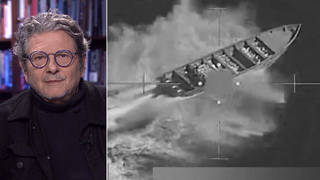
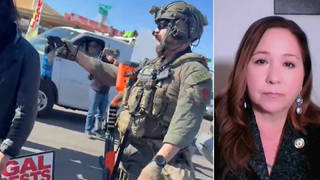
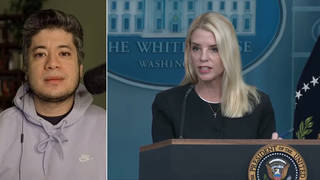
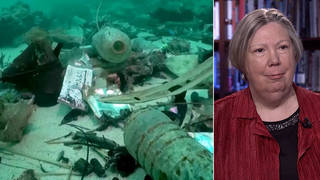


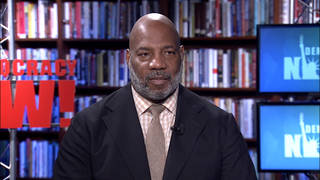
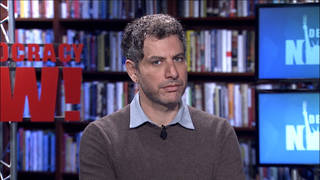
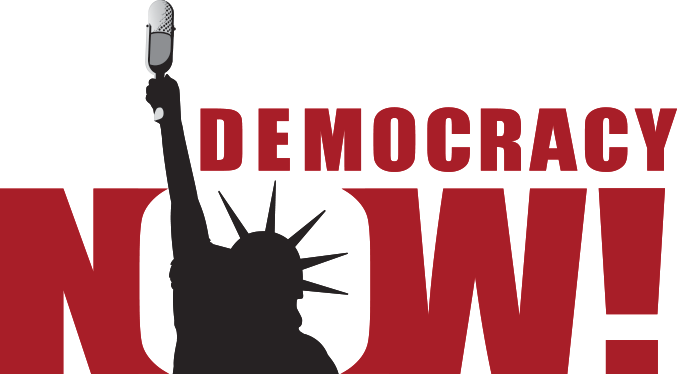
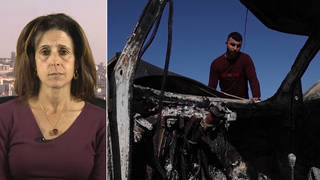
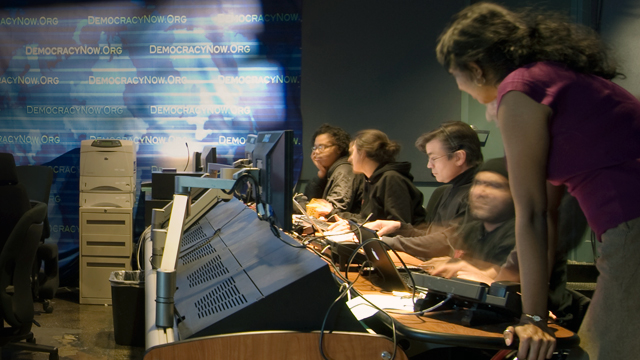
Media Options